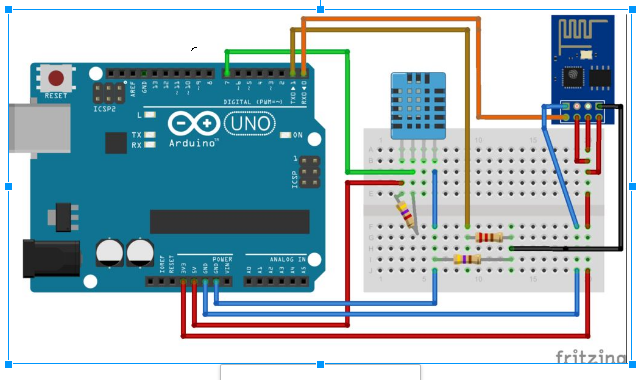Before I get into the specifics, let’s take a moment to consider the key questions and caveats involved in a project like this:
- How can I create a weather station that it is neither valuable nor attractive to a thief?
- How can I keep hardware costs and development time to the minimum?
- How can I measure and access weather data in real time and display it in a useful way?
- wind and wind gusts
- wind direction
- rain
- atmospheric pressure
- temperature
- humidity
Connect station to Internet. Store and retrieve local weather data. Communicate between weather station and server.
How can I reduce maintenance to (almost) zero?
- Manage hanging of software
- Manage loss of connectivity
- Manage loss of energy supply
We will use an MediaTek LinkIt™ Smart 7688 platform, a DHT11, an ESP8266, and ThingSpeak.com for this project. This is a great project to start using the ESP8266 for some basic data logging so let's get started! The ESP8266 based WiFi breakout boards are becoming more popular with Makers due to a low cost and a powerful, programmable microcontroller on-board. The cost is a magnitude lower than solutions including MediaTek LinkIt™ Smart 7688 platform. To quote Make publisher Brian Jepson: “This is inexpensive enough to be very much in the territory of ‘thousands of sensors-launched-out-of-a-cannon’-cheap.”
Couple the ESP8266 with one of the inexpensive DHT series digital temperature and humidity sensors and we have a project that may literally be deployed anywhere to broadcast sensor data. The broadcasting used in this tutorial is using the ESP8266 webserver code and respond to web requests (like in a browser or a web client) to return temperature and humidity data (in a REST type format). This project demonstrates the programming of the ESP8266 ESP-01 module with the MediaTek LinkIt™ Smart 7688 platform and interfacing with a DHT temperature/humidity sensor. Using other sensors and their corresponding libraries, other electronics may be interfaced with the ESP8266 and monitored via WiFi.











Comments
Please log in or sign up to comment.